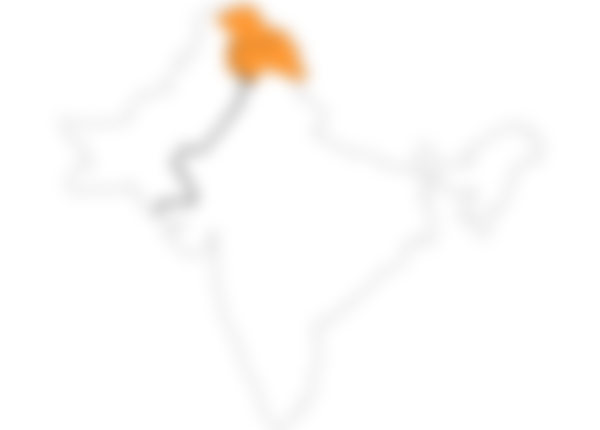Kashmir, a mountainous valley that borders Pakistan and India, has been a center of conflict between the two nuclear-armed countries since the 1947 partition of British India.
At the time of the partition, the British agreed to divide their former colony into two countries: Pakistan, with a Muslim majority, and India, with a Hindu majority. Both nations covet Kashmir, which is Muslim majority, and occupy portions of it with military forces.
For decades, an uneasy stalemate has prevailed, broken by occasional military incursions, terrorist attacks and police crackdowns. But on Monday, the Indian government decided to permanently incorporate the territory it controls into the rest of India.
The administration of Prime Minister Narendra Modi revoked Article 370 of the Indian constitution, a 70-year-old provision that had given autonomy to the state of Jammu and Kashmir, which includes the Hindu-majority area of Jammu and the Muslim-majority Kashmir valley.
The government also introduced a bill to strip the region of statehood and divide it into two parts, both under direct control of the central government.
But Mr. Modi, a Hindu nationalist, had campaigned for re-election in part by stoking patriotic fervor against Muslim-led Pakistan. He promised the full integration of Kashmir, a cause which his party has championed for decades, and now he is delivering on that pledge.
Pakistan condemned India’s moves. Pakistan’s prime minister, Imran Khan, called on President Trump to follow through on an offer he made two weeks ago to mediate the Kashmir dispute.
What are the roots of the conflict?

Muhammad Ali Jinnah, the founder of Pakistan, on the country’s first day as a nation. Lord Louis Mountbatten, left, had overseen the partition of the subcontinent. Associated Press
In 1947, the sudden separation of the area into Pakistan and India prompted millions of people to migrate between the two countries and led to religious violence that killed hundreds of thousands.

AFGHAN.
CHINA
GILGIT-BALTISTAN
Controlled by Pakistan
BOUNDARY
UNDEFINED
LINE OF CONTROL
Feb. 26
Airstrikes
JAMMU AND KASHMIR
Controlled by India
PAKISTAN
Feb. 14
Suicide bombing
PAK.
INDIA
INDIA
By Scott Reinhard
Left undecided was the status of Jammu and Kashmir, a Muslim-majority state in the Himalayas that had been ruled by a local prince. Fighting quickly broke out, and both countries eventually sent in troops, with Pakistan occupying about one-third of the state and India two-thirds.
The prince signed an agreement for the territory to become part of India. Regional autonomy, which was formalized through Article 370, was a key inducement.
The village of Gujran, in the upper section of Tulail Valley, Kashmir. Michael Benanav for The New York Times
Despite efforts by the United Nations to mediate the Kashmir dispute, India and Pakistan continue to administer their portions of the former princely territory while hoping to get full control of it. Troops on both sides of the so-called “line of control” regularly fire volleys at each other.
Muslim militants have frequently resorted to violence to expel the Indian troops from the territory. Pakistan has backed many of those militants, as well as terrorists who have struck deep inside India — most brutally in a four-day killing spree in Mumbai in 2008, which left more than 160 people dead.
What is Article 370?
Article 370 was added to the Indian constitution shortly after the partition of British India to give autonomy to the former princely state of Jammu and Kashmir until a decision was made about its rule. It limited the power of India's central government over the territory. A related provision gave state lawmakers the power to decide who could buy land and be a permanent resident -- a provision that irked many non-Kashmiris.
Although it was intended to be temporary, Article 370 says that it can only be abrogated with the consent of the legislative body that drafted the state constitution. That body dissolved itself in 1957, and India's Supreme Court ruled last year that Article 370 is therefore a permanent part of the constitution.
The Modi government disagrees and says the president of India, who is beholden to the ruling party, has the power to revoke the article.
Why did the conflict
heat up this year?
Indian soldiers examine debris after an explosion in Pulwama, in southern Kashmir. Younis Khaliq/Reuters
The immediate cause was the Feb. 14 suicide bombing by a young Islamic militant, who blew up a convoy of trucks carrying paramilitary forces in Pulwama in southern Kashmir.
GILGIT-BALTISTAN
Controlled by Pakistan
Feb. 26
Balakot
Airstrikes
LINE OF CONTROL
JAMMU AND KASHMIR
Controlled by India
Feb. 14
Suicide bombing
Pulwama
PAK.
INDIA
By Scott Reinhard
Indian aircraft responded to that attack by flying into Pakistan and firing airstrikes near the town of Balakot. The Indian government claimed it was attacking a training camp for Jaish-e-Mohammed, the terrorist group that claimed responsibility for the bombing.
The next day, Pakistani and Indian fighter jets engaged in a skirmish over Indian-controlled territory, and Pakistani forces downed an Indian aircraft — an aging Soviet-era MiG-21 — and captured its pilot. It was the first aerial clash between the rivals in five decades.
Pakistan quickly returned the pilot, easing the diplomatic tensions. But Mr. Modi exploited a wave of a nationalist fervor over the Pulwama attack as part of his re-election campaign that helped his Bharatiya Janata Party win a sweeping victory.
Pakistan’s prime minister, Imran Khan, was elected last year with the backing of his country’s powerful military, and he wants to show that he can stand up to India, even as his country’s economy is so weak that he sought bailouts from Saudi Arabia and China.
Will the United States and other
global powers get involved?
On July 22, Mr. Trump hosted Mr. Khan at the White House. Although the meeting was focused on how to end the war in Afghanistan, Mr. Trump told reporters that Mr. Modi had asked him to help mediate the Kashmir dispute. Mr. Khan welcomed his involvement. The Indian government denied making any mediation request and has long insisted on direct negotiations with Pakistan to resolve the dispute.
Under Mr. Trump, American foreign policy has shifted away from Pakistan, a longtime recipient of American aid, toward India, which the administration views as a bulwark against China’s rising influence in Asia.
China, meanwhile, has become a close ally and financial patron of Pakistan. The Chinese government recently urged India and Pakistan to settle their conflicts through bilateral discussions. China shares a border with Jammu and Kashmir state, and India and China still do not agree on the demarcation line.
What is likely to happen next?
Indian soldiers near the remains of an Indian aircraft after it crashed on Wednesday. Danish Ismail/Reuters
The constitutional changes, issued through a presidential order, could face legal challenges. Last year, India’s Supreme Court ruled that Article 370 could not be abrogated because the state-level body that would have to approve the change went out of existence in 1957.
“My view is that this presidential notification is illegal,” said Shubhankar Dam, a law professor at the University of Portsmouth in Britain and the author of a book on executive power in India. “The question is one of jurisdiction: Does the government of India have the power to do this?”
Pakistan, for its part, said it will “exercise all possible options to counter the illegal steps” taken by India.
Mr. Modi’s moves to integrate Kashmir into India are likely to be popular in much of the country. But there is widespread panic in Kashmir, where there have been decades of protests against Indian rule.

